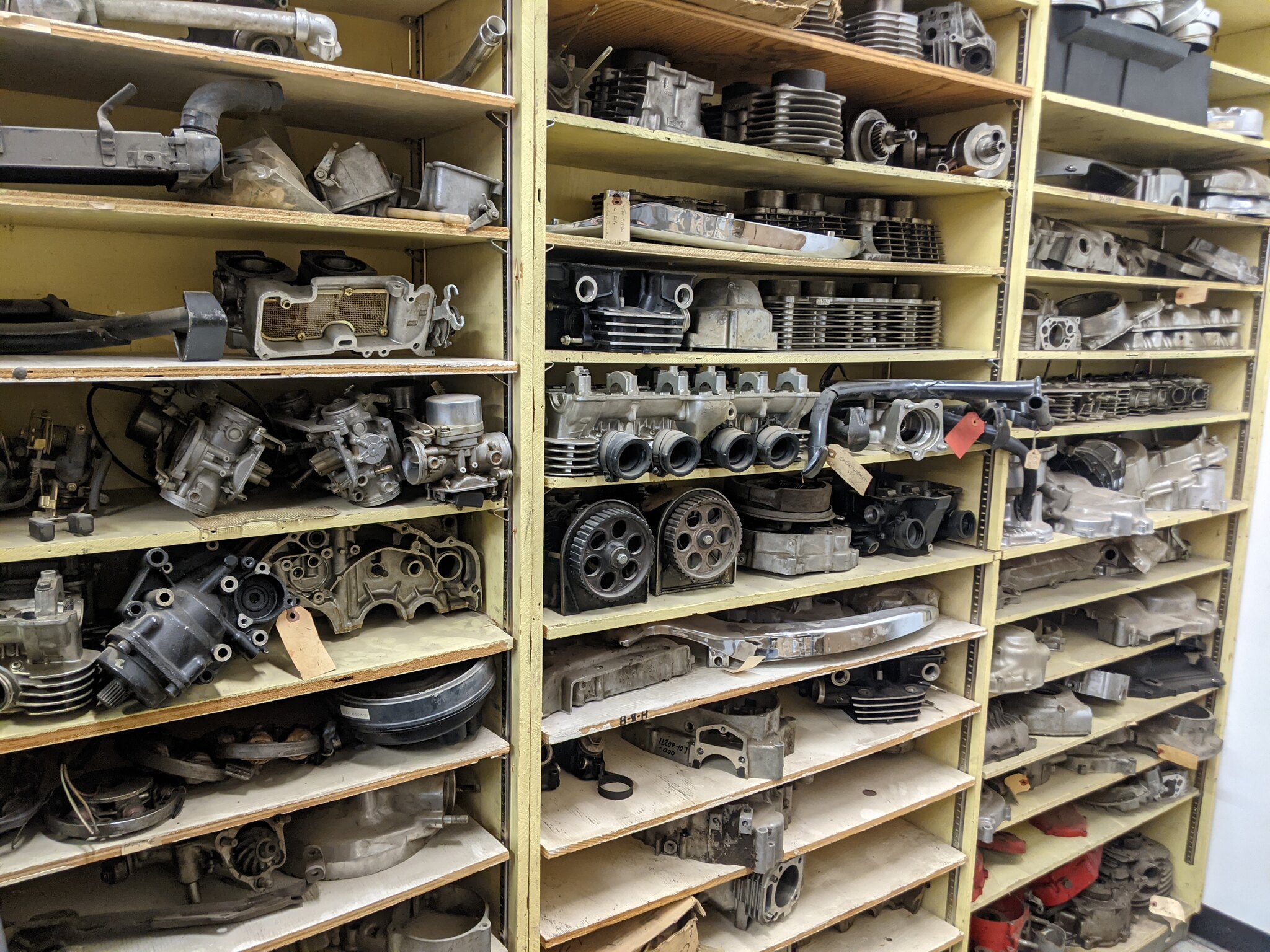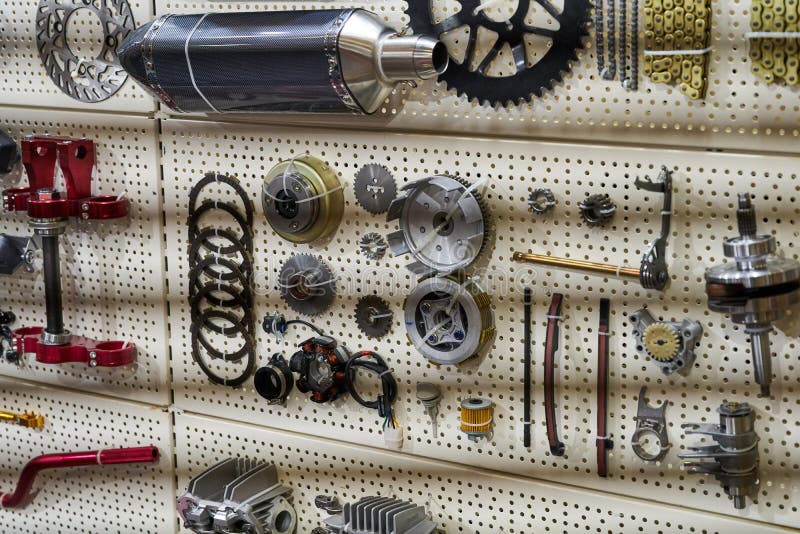Crucial Motorcycle Parts NZ for Peak Performance and Safety And Security
Crucial Motorcycle Parts NZ for Peak Performance and Safety And Security
Blog Article
Understanding the Crucial Parts of a Motorbike: A Comprehensive Guide for Enthusiasts
For motorbike fanatics looking to boost their riding experience and ensure their bikes run efficiently, understanding the essential components of a motorbike is vital. Each aspect, from the engine's complex operations to the critical function of the braking mechanisms, not just affects efficiency yet likewise security and comfort. This guide will go through the essential components that every cyclist should recognize with, enabling notified selections in both upkeep and prospective upgrades. As we start this exploration, one must ask: how does each element connect to develop the seamless ride every fanatic looks for?
Engine Components

The camshaft plays a vital role in regulating the timing of the engine's shutoffs, guaranteeing the specific opening and closing required for reliable fuel and air intake, as well as exhaust expulsion. This timing is critical to preserving ideal engine efficiency and effectiveness. In addition, the carburetor or fuel injection system, relying on the bike version, is accountable for mixing air with fuel in the appropriate ratio for combustion.
The air conditioning system, either air or liquid-based, functions to maintain the engine's temperature within operational restrictions, protecting against overheating and guaranteeing long life - motorbike shop. Each element, thoroughly made and integrated, adds to the smooth operation of the engine, specifying the bike's power result and overall efficiency
Transmission System
Essential to the bike's capability, the transmission system makes sure reliable power transfer from the engine to the wheels. This system consists of numerous essential elements, consisting of the clutch, transmission, and final drive, each playing an important role in converting the engine's power into movement. The clutch, usually run by a hand lever, serves to disengage the engine and engage from the transmission, enabling smooth equipment modifications and regulated acceleration.
The gearbox, often described as the transmission correct, consists of a set of equipments that bikers can by hand change with to adjust the bike's rate and torque result. These gears are prepared in a series that makes it possible for the motorbike to speed up smoothly and keep ideal engine efficiency throughout different rates. Most motorbikes make use of a sequential gearbox, needing the rider to shift equipments in a fixed order.
Braking Systems
While comprehending the transmission system is key to using a bike's power, equally essential is the capacity to manage and quit that power efficiently, which is where braking devices enter into play. Brakes are important for safety and performance, offering the biker with the required control to browse various terrains and conditions. Usually, motorcycles feature 2 sorts of stopping systems: disc brakes and drum brakes.
Disc brakes are a lot more common in contemporary motorbikes due to their exceptional efficiency. This system offers better warmth dissipation, constant performance, and boosted quiting power, especially in wet problems.
Alternatively, drum brakes, though much less common, are still discovered in some motorbikes. They function by pushing brake shoes against the inner surface of a drum connected to the wheel. While normally much less reliable in warm dissipation and quiting power, drum brakes are simpler and a lot more cost-efficient.
Understanding these braking systems' subtleties enables riders to maintain their motorcycles correctly and value the design that guarantees efficient and secure quiting.
Suspension and Steering
Suspension and guiding systems are crucial components that significantly affect a bike's handling and trip convenience. The shock absorber, being composed of forks at the front and shock absorbers at the back, absorbs road abnormalities, improving security and control. Front forks, inverted or generally telescopic, compress and rebound to minimize influences, while back shock absorbers maintain tire contact with the road, essential for grip and security.
Steering, focused around the handlebars, links the motorcyclist to the bike's directional control. The steering head bearings guarantee smooth operation, enabling exact ability to move. Proper placement and maintenance of these bearings are essential for foreseeable steering action and reducing motorcyclist fatigue.
The suspension's adjustability is an additional critical element; preload, damping, and rebound settings allow modification to fit different riding designs and conditions. This adaptability is vital for enhancing performance, whether browsing city roads or taking on rugged tracks. Technologies like digital suspension systems use real-time changes, enhancing adventure high quality across varied surfaces.

Electrical Equipments
After guaranteeing a smooth and regulated experience via reliable suspension and guiding systems, focus transforms to the visit their website electrical systems, a crucial facet of contemporary motorbikes. These systems play a vital duty not just in starting the engine however additionally in powering different elements that enhance the performance and security of the bike.
At the heart of a bike's electrical system is the battery, which stores electric power essential for beginning the engine and powering auxiliary systems Visit Website - motorcycle parts nz. The alternator or generator, combined with the rectifier-regulator, guarantees the battery remains charged while the motorcycle functions, transforming mechanical energy right into electrical energy and maintaining voltage degrees
The ignition system, an additional vital part, is accountable for igniting the air-fuel mix in the engine's cyndrical tubes. Modern motorbikes usually utilize an electronic ignition system, supplying better performance and reliability compared to typical systems.
Lights systems, consisting of fronts lights, tail lights, and indicators, are likewise vital, guaranteeing visibility and security for the biker. Extra electronic elements such as sensing units, control devices, and displays add to innovative functions like gas shot management, anti-lock stopping systems (ABDOMINAL), and electronic control panels, even more boosting the riding experience.
Verdict
A thorough comprehension of a motorbike's vital elements, including the engine, transmission system, off road motorcycle boots stopping systems, suspension, steering, and electrical systems, is essential for fanatics intending to optimize performance, safety, and convenience. Mastery of these elements allows for educated decisions relating to maintenance and upgrades, ultimately boosting the riding experience. By incorporating this expertise, bikers can guarantee their motorbikes operate at peak efficiency and dependability, thus optimizing both pleasure and long life of their lorries.
For motorbike enthusiasts looking to raise their riding experience and guarantee their bikes run efficiently, understanding the vital components of a motorcycle is vital.Indispensable to the motorbike's performance, the transmission system guarantees effective power transfer from the engine to the wheels.While comprehending the transmission system is key to harnessing a bike's power, just as important is the ability to regulate and stop that power efficiently, which is where braking mechanisms come into play. Generally, bikes include 2 kinds of braking systems: disc brakes and drum brakes.
A comprehensive comprehension of a bike's vital elements, consisting of the engine, transmission system, braking devices, suspension, steering, and electric systems, is indispensable for lovers intending to maximize security, convenience, and performance.
Report this page